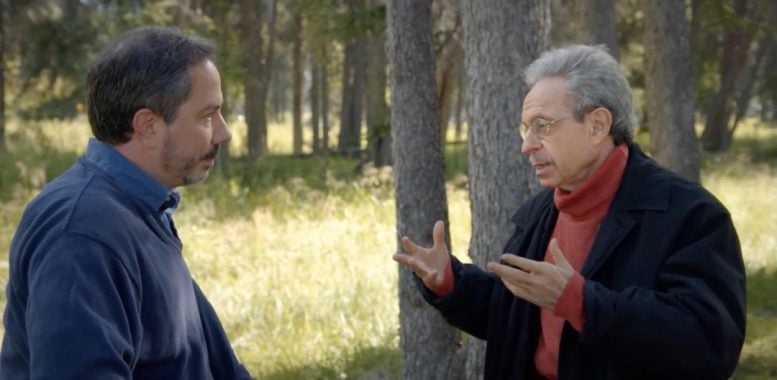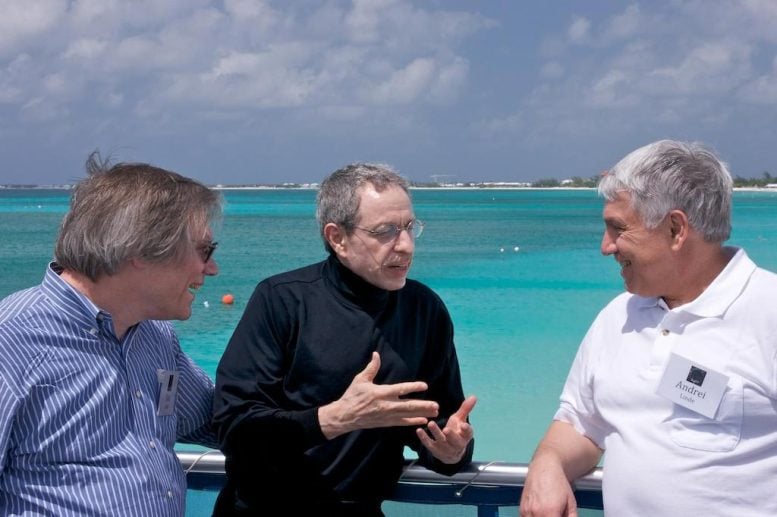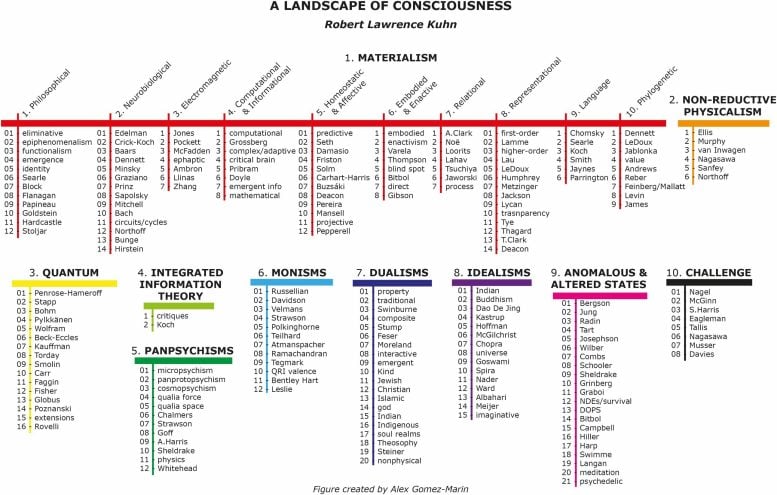Kuhn’s taxonomy of consciousness connects various theories to deep questions about human existence and AI, based on his extensive dialogue with over 200 experts.
“Out of meat, how do you get thought? That’s the grandest question,” said philosopher Patricia Churchland to Robert Lawrence Kuhn, the producer and host of the acclaimed PBS program Closer to Truth and member of FQxI’s scientific advisory council.
Kuhn has now published a comprehensive taxonomy of proposed solutions and theories regarding the hard problem of consciousness. His organizing framework aims to assess their impact on meaning, purpose, and value, as well as on AI consciousness, virtual immortality, survival beyond death, and free will. His work, titled ‘Landscape of Consciousness,’ appeared in the August 2024 issue of the journal Progress in Biophysics and Molecular Biology.

Exploring the Landscape of Consciousness
Since its debut in 2000, Closer To Truth has broadcast 333 episodes, including 30 in collaboration with Foundational Questions Institute, FQxI, a science think tank and funding agency. Kuhn’s article is the culmination of numerous in-depth interviews with experts over the decades.“I have discussed consciousness with over 200 scientists and philosophers,” says Kuhn, who is himself trained in neurophysiology. “Landscape is the product of a lifetime.”
Theories and Frameworks
The article begins with the classic mind-body problem: How do the felt experiences in our minds relate to the neural processes in our brains? How do mental states, whether sensory, cognitive, emotional, or even noumenal (self-less) awareness, correlate with brain states? “Although there are families of mind-body problems, I focus tightly on phenomenal consciousness: our inner awareness, ‘what it feels like to be’ something,” says Kuhn.

Diverse Perspectives on Consciousness
Kuhn presents diverse theories of consciousness, from materialist/physicalist to nonmaterialist/nonphysicalist. These are categorized as Materialism Theories (philosophical, neurobiological, electromagnetic field, computational and informational, homeostatic and affective, embodied and enactive, relational, representational, language, phylogenetic evolution); Non-Reductive Physicalism; Quantum Theories; Integrated Information Theory; Panpsychisms; Monisms; Dualisms; Idealisms; Anomalous and Altered States Theories; and Challenge Theories. “Each explanation is self-described by its adherents,” notes Kuhn.
The taxonomy is laid out in the accompanying figure.

Methodology and Purpose
“My purpose must be humble: collect and categorize, not assess and adjudicate,” says Kuhn. “Seek insights, not answers.” Kuhn produced the organizing framework for these diverse theories of consciousness in order to explore their impact on “ultimate questions,” such as meaning, purpose, and value (if any), AI consciousness, virtual immortality, survival beyond death, and free will, he says. “Understanding consciousness at this point cannot be limited to selected ways of thinking or knowing, but should seek expansive yet rational diversity.”
Reflections on Theories of Consciousness
Having produced an article of around 175,000 words, Kuhn found that his opinions on certain proposals had evolved. “My own hunch, right here, right now might be something of a Dualism-Idealism mashup. Second place might go to some form of Quantum Consciousness, triggered by writing this paper and surprising me. Third place, counterintuitively, to a kind of Eliminative Materialism/Illusionism, combined with Neurobiological and Representational Theories.”
But, adds Kuhn, “Smart, serious folks believe radically different theories; what I believe doesn’t much matter.”
Reference: “A landscape of consciousness: Toward a taxonomy of explanations and implications” by Robert Lawrence Kuhn, 26 January 2024, Progress in Biophysics and Molecular Biology.
DOI: 10.1016/j.pbiomolbio.2023.12.003
This post was originally published on here







